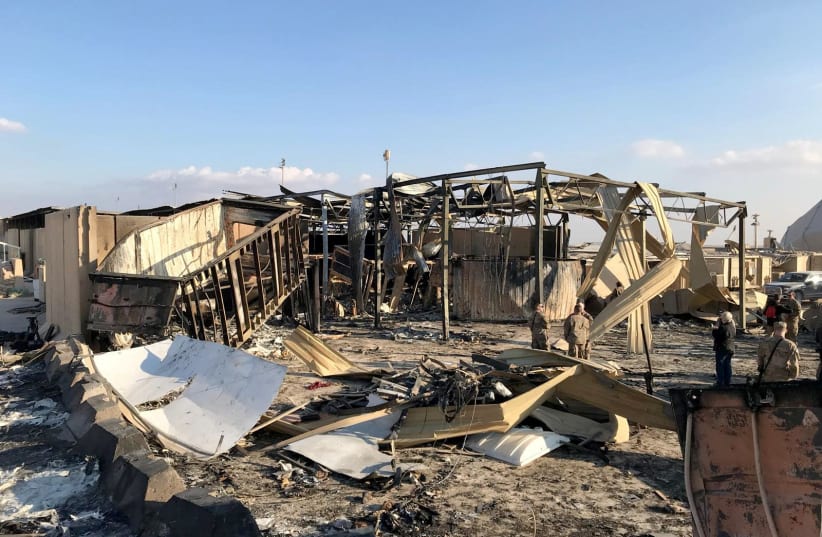Most details of the attack that targeted US forces stationed at the al-Asad base in Iraq on Wednesday have been revealed.
A truck was used,10 rockets were placed in the truck’s bed, and then a false bed was put on top to obscure them, a method previously used by pro-Iranian militias. The rockets were 122 mm. and are an Iranian type. Iran was likely behind the attack by activating one of its local militias.
But key questions remain over which militia carried out the attack, and what the militias expect will come next.
One source told Iranian media that the attack had three messages: one, to avenge the airstrike the US carried out in Syria in February that was itself a response to an attack on US forces in Iraq’s Erbil in mid-February; the second and third messages were designed to challenge the so-called US “occupation” of Iraq. The pro-Iranian “resistance,” led by Kataib Hezbollah in Iraq, was apparently sending these messages.
But the US is not being hasty in saying who perpetrated the attack. That is because naming names requires actually doing something in response.
If a person ordered it, or Iran, then just more airstrikes on warehouses and bases in Syria would not be an appropriate response. Yet the US knows from experience that Iran uses Iraq as a kind of “near abroad” battleground to bleed the US.
Iranian-backed militias have killed hundreds of Americans in Iraq since 2003, using the infamous “EFPs” – explosively formed penetrators – that exploded and killed Americans a decade ago. These roadside bombs were later altered. Now Iran uses 107 mm. and 122 mm. rockets to attack American troops.
The questions facing the Pentagon are also about force protection. The US withdrew from most facilities in Iraq, but wants to continue to have a footprint at Union III in Baghdad, at al-Asad and in Erbil. It expected to be safe in Erbil, but America lacks many of the key components of a multi-layered air defense system to stop these rockets.
Iran is using the same kind of munitions it advised Hezbollah and Hamas to use against Israel. However, Israel developed Iron Dome and other systems to protect itself and stop those rockets. The US has Patriots for longer-range ballistic missiles, and it has C-RAM for shorter-range munitions. But Washington does not appear to want to move more air defense systems into Iraq. This leaves US forces and coalition contractors a bit at the mercy of the Islamic Republic.
The key questions linking Iran to the attacks, such as signal intelligence or some kind of courier that brings the orders to Kataib Hezbollah, and the planning structure or even the garage where the rocket trucks were assembled are key parts of Iran’s threats in Iraq. Finding those would require more cooperation from Baghdad.
So far, Tehran continues to have the plausible deniability it wants with the rocket attacks in Iraq. The US under the Biden administration appears hesitant to launch airstrikes the way Trump’s administration did.
